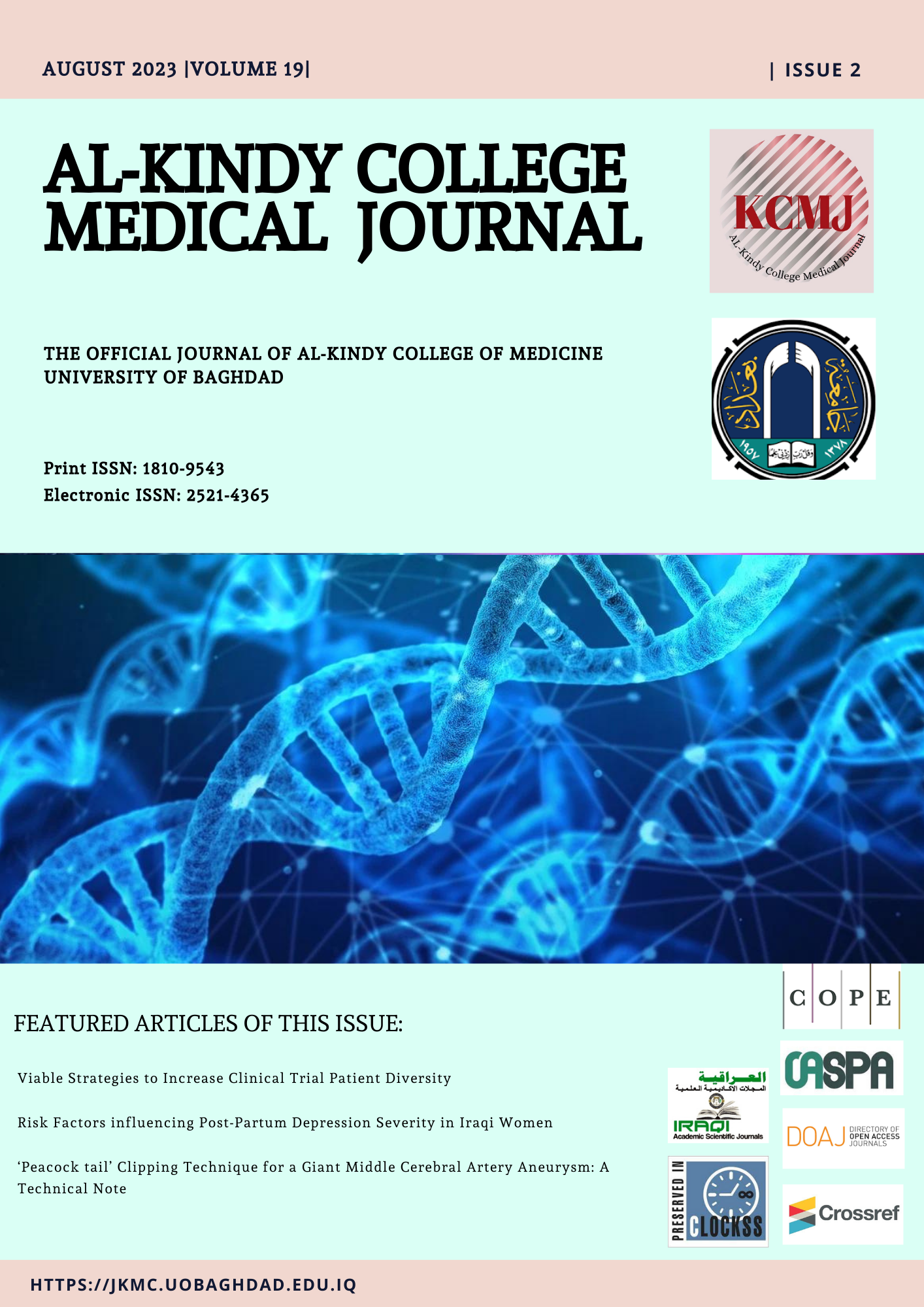Risk Factors influencing Post-Partum Depression Severity in Iraqi Women
DOI:
https://doi.org/10.47723/kcmj.v19i2.1050Keywords:
Arabs and women mental health, Edinburgh Postnatal Depression Scale, maternity blues, postnatal depression, psychiatric status rating scales and psychometricsAbstract
Background: Post-partum depression (PPD) is a form of postnatal depression that affects mothers. Clinical manifestations usually appear within six months after delivery. Risk factors that influence the severity of post-partum depression are not fully known in the Iraqi population.
Objectives: We aim to evaluate the risk factors and identify potential predictors that may influence the symptom levels (severity) of post-partum depression among Iraqi women from Baghdad.
Subjects and Methods: The current study is cross-sectional, and we used the Edinburgh Postnatal Depression Scale (EPDS) and a cut-off value of 13 to differentiate patients into two those with lower symptom levels (LSL) and higher symptom levels (HSL). We also explored patients' attributes, newborn-related parameters, and socio-demographics.
Results: The total sample included almost one hundred patients (n=101), including females with lower symptom levels (EPDS<=13, 48.51%) and others with higher symptom levels (EPDS>13, 51.49%). There were two significant risk factors of PPD, including marital problems (OR=3.60, 95% CI=1.54 to 8.41, p=0.003) and perinatal mood disturbances (OR=3.23, 95% CI=1.40 to 7.46, p=0.005). The former results are congruent with our multivariable ordinal regression, while path analysis and structural modeling conveyed an additional risk factor: the personal history of depression. ROC analysis did not convey any significant difference between the two groups (LSL versus HSL) based on age. However, mothers with HSL were older than the other group (29.19±0.88 versus 27.08±0.79, p=0.099).
Conclusion: Post-partum depression with higher symptom levels is frequent among Iraqi mothers. Healthcare institutes should be vigilant concerning the underlying risk factors. Intervention requires integrating the role of social workers to understand the patient's family dynamics.
Downloads
Published
Issue
Section
License
Copyright (c) 2023 AL-Kindy College Medical Journal

This work is licensed under a Creative Commons Attribution 4.0 International License.














